Nicholas Arroyave-Portela
1972, United Kingdom
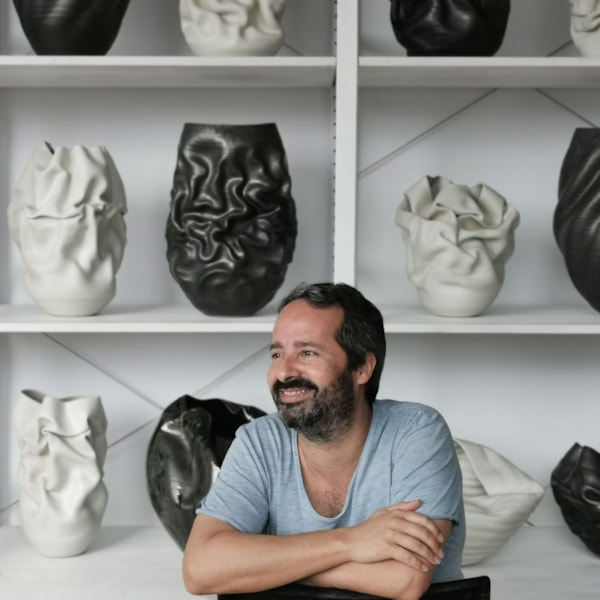
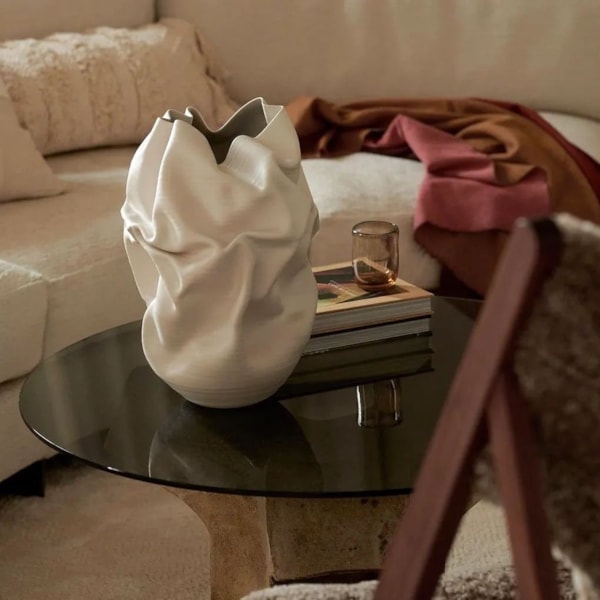
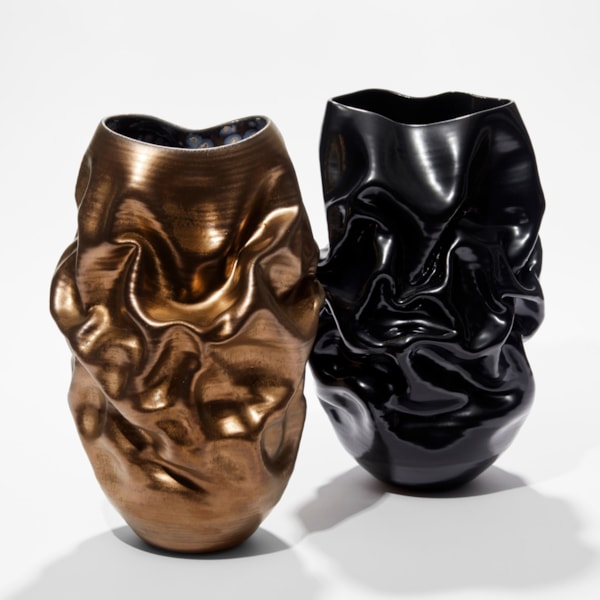
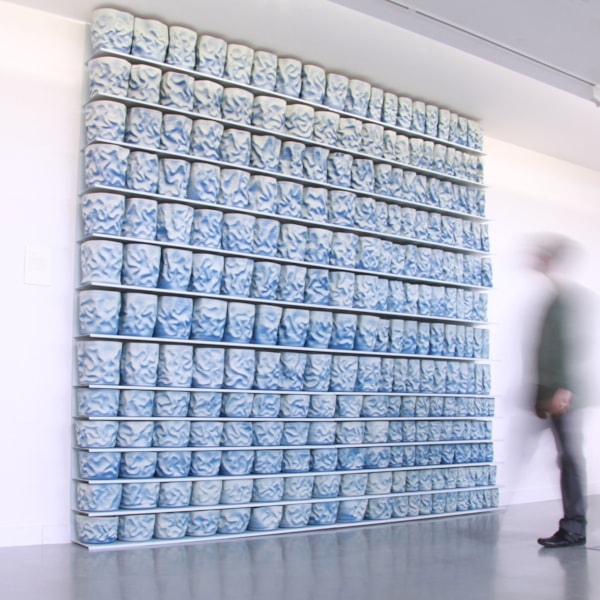
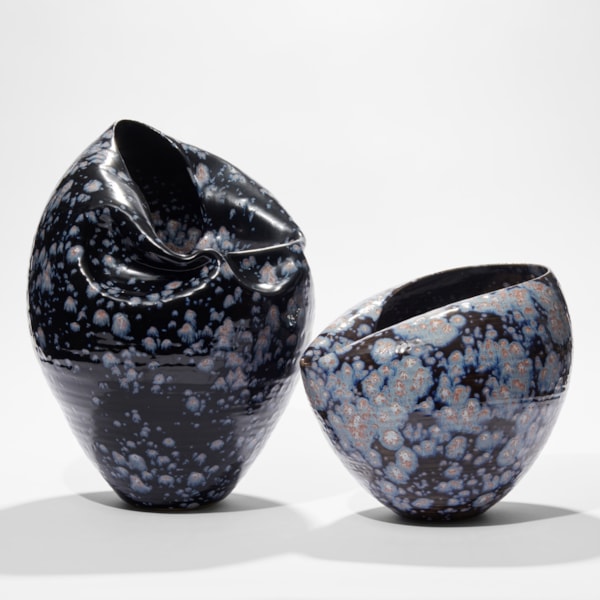
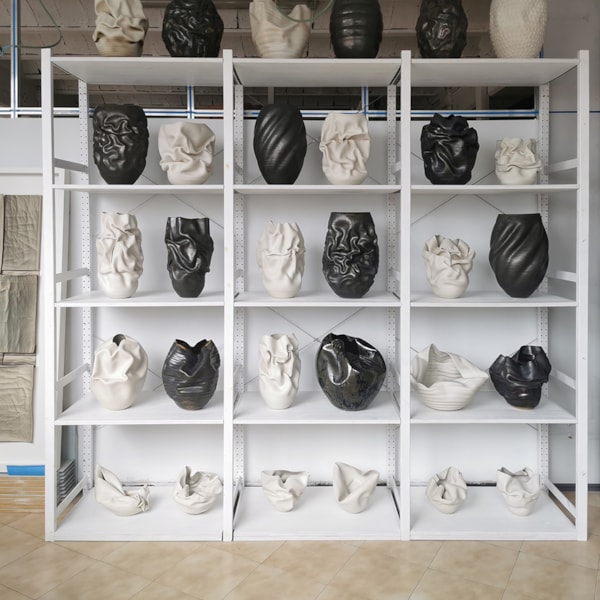
Nicholas Arroyave-Portela’s professional ceramic practice began in 1994. After 20 years based in London, he moved and set up his studio in Barcelona, Spain.
Arroyave-Portela's creations are all thrown on the wheel using his own unique technique. Pulling up as much clay from the bottom mass as possible, the clay walls of each piece are created thin and even, maximising the artist’s ability to manipulate the form while the material is still soft and malleable. Additional porcelain slips are sometimes applied to create further surface textures and layering. After the first initial bisque firing (1080 degrees) glazes are applied by using various methods such as spraying and pouring, a process often repeated several times after each firing of 1260 degrees. The multi-firing process allows for the build-up of the glaze, creating a rich palette of tones and finishes.
Arroyave-Portela's works can be found in various major museums and private collections worldwide including the Ashmolean Museum (Oxford UK), the Fitzwilliam Museum (Cambridge UK), The Philadelphia Museum of Art (USA) to name a few.
In the artist’s own words;
“Over two decades ago when I started out as a young artist working with clay, a particular concept haunted me - “It is written the water that flows into the earthenware vessel takes on its form" Lao Tzu, an ancient Chinese philosopher - I wanted to explore how this idea actually translated for me. I started experimenting with polythene, a material easily transformed in shape and form through the insertion of water inside its walls. This analysis led to a fascination with saturation, volume and fullness, also with the opposite qualities, of emptiness, dehydration, cracked and dry.
After a long break of many years, I decided to revisit the vessel as a vehicle for self-expression. It felt like coming home after a long journey. I have become conscious that these qualities have now taken on a symbolic emotional gesture of the human condition.
When working with materials as metaphorically powerful as Earth, Air, Fire and Water, I am also made aware that the ritualistic and performative aspects of throwing have become like a mantra for me, one in which the revolving motion of the wheel head, the clay moving through my hands and the water acting as a lubricant to create form also allows me to connect to a particular state of mind.
The vessels that are created are the manifestation of being in that state of mind where I am free to trust my intuition and creative instincts.
I also take inspiration from the life and work of Dr. Masaru Emoto, the Japanese scientist who studied the scientific evidence of how the molecular structure of water transforms when it is exposed to human words, thoughts, sounds and intentions. Water being one of the constant references in my work, Dr. Masaru Emoto has made me more mindful of what I am putting into each and every work of art that I produce.
Indeed I am also able to use the metaphor of water as a means of representing time, which not only takes an infinite number of shapes but also comes in cycles."
Arroyave-Portela's creations are all thrown on the wheel using his own unique technique. Pulling up as much clay from the bottom mass as possible, the clay walls of each piece are created thin and even, maximising the artist’s ability to manipulate the form while the material is still soft and malleable. Additional porcelain slips are sometimes applied to create further surface textures and layering. After the first initial bisque firing (1080 degrees) glazes are applied by using various methods such as spraying and pouring, a process often repeated several times after each firing of 1260 degrees. The multi-firing process allows for the build-up of the glaze, creating a rich palette of tones and finishes.
Arroyave-Portela's works can be found in various major museums and private collections worldwide including the Ashmolean Museum (Oxford UK), the Fitzwilliam Museum (Cambridge UK), The Philadelphia Museum of Art (USA) to name a few.
In the artist’s own words;
“Over two decades ago when I started out as a young artist working with clay, a particular concept haunted me - “It is written the water that flows into the earthenware vessel takes on its form" Lao Tzu, an ancient Chinese philosopher - I wanted to explore how this idea actually translated for me. I started experimenting with polythene, a material easily transformed in shape and form through the insertion of water inside its walls. This analysis led to a fascination with saturation, volume and fullness, also with the opposite qualities, of emptiness, dehydration, cracked and dry.
After a long break of many years, I decided to revisit the vessel as a vehicle for self-expression. It felt like coming home after a long journey. I have become conscious that these qualities have now taken on a symbolic emotional gesture of the human condition.
When working with materials as metaphorically powerful as Earth, Air, Fire and Water, I am also made aware that the ritualistic and performative aspects of throwing have become like a mantra for me, one in which the revolving motion of the wheel head, the clay moving through my hands and the water acting as a lubricant to create form also allows me to connect to a particular state of mind.
The vessels that are created are the manifestation of being in that state of mind where I am free to trust my intuition and creative instincts.
I also take inspiration from the life and work of Dr. Masaru Emoto, the Japanese scientist who studied the scientific evidence of how the molecular structure of water transforms when it is exposed to human words, thoughts, sounds and intentions. Water being one of the constant references in my work, Dr. Masaru Emoto has made me more mindful of what I am putting into each and every work of art that I produce.
Indeed I am also able to use the metaphor of water as a means of representing time, which not only takes an infinite number of shapes but also comes in cycles."
Public Collections
'Home, Hogar' Arts Two building, Queen Mary, University of London, UK | The Ashmolean Museum, Oxford, UK | Fitzwilliam Museum, Cambridge, UK | The National Museums and Galleries, Merseyside, Liverpool, UK | Leeds City Gallery, UK | The Contemporary Museum, Honolulu, Hawaii, USA | The Philadelphia Museum of Art, USA | Houston Centre for Contemporary Art, USA | The Mint Museum, USA
Exhibitions and further information
2024 Remnants Solo Exhibition | Exhibition catalogue | Remnants - The work of Nicholas Arroyave-Portela by Dr Emma Park
2021 Crafts Council Stories | Ceramicist Nicholas Arroyave-Portela on the textural trickery of his crumpled vessels
2020 Introducing Nicholas Arroyave-Portela
Artist portrait courtesy of the artist.
'Home, Hogar' Arts Two building, Queen Mary, University of London, UK | The Ashmolean Museum, Oxford, UK | Fitzwilliam Museum, Cambridge, UK | The National Museums and Galleries, Merseyside, Liverpool, UK | Leeds City Gallery, UK | The Contemporary Museum, Honolulu, Hawaii, USA | The Philadelphia Museum of Art, USA | Houston Centre for Contemporary Art, USA | The Mint Museum, USA
Exhibitions and further information
2024 Remnants Solo Exhibition | Exhibition catalogue | Remnants - The work of Nicholas Arroyave-Portela by Dr Emma Park
2021 Crafts Council Stories | Ceramicist Nicholas Arroyave-Portela on the textural trickery of his crumpled vessels
2020 Introducing Nicholas Arroyave-Portela
Artist portrait courtesy of the artist.
Artworks by the artist









































